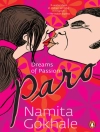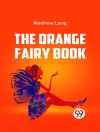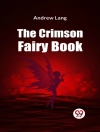Ford Madox Ford’s ‘The Parade’s End Tetralogy’ comprises four interconnected novels—’Some Do Not, ‘ ‘No More Parades, ‘ ‘A Man Could Stand Up, ‘ and ‘Last Post’—that together form a profound examination of the moral and psychological complexities of life during World War I. The narrative intricately weaves themes of love, duty, and disillusionment, employing a modernist style marked by stream-of-consciousness techniques and a distinctive narrative structure that reflects the fragmentation of the era. Ford’s vivid portrayal of the tumultuous changes in British society during and after the war serves to highlight the existential dilemmas faced by its characters, particularly the war-hardened protagonist, Christopher Tietjens, whose internal struggles mirror the broader societal upheavals of the time. Ford Madox Ford, a luminary of 20th-century literature, drew on his personal experiences, including his service in the war and his tumultuous relationships, to craft this tetralogy. His insights into the psychological landscape of wartime Britain—shaped by his friendships with contemporaries such as Joseph Conrad and Ezra Pound—culminated in a work that critiques traditional values and reflects the disillusionment that followed the Great War. Ford’s innovative narrative techniques and his keen eye for social commentary invite readers into the troubled psyche of his characters, making the tetralogy a seminal exploration of the human condition. For readers seeking a profound literary journey that deftly navigates the chaos of war and personal turmoil, ‘The Parade’s End Tetralogy’ stands as an essential read. Ford’s elegant prose and incisive observations compel readers to ponder the arduous path of individuals caught in the wake of history. This tetralogy not only reshapes our understanding of modernist literature but also urges us to confront the ethical questions that resonate even today.
Mengenai Pengarang
Ford Madox Ford, born Ford Hermann Hueffer on December 17, 1873, was a prolific English novelist, editor, critic, and a noteworthy figure in the modernist literary movement. His most distinguished work arguably remains the four-part series known as ‘The Parade’s End’ tetralogy, comprising ‘Some Do Not…’ (1924), ‘No More Parades’ (1925), ‘A Man Could Stand Up’ (1926), and ‘Last Post’ (1928). These novels, set during and after World War I, reflect on the social turmoil and the transformation of society through the lens of Christopher Tietjens, an aristocratic statistician who grapples with the chaos of the modern world and his own personal conflicts. Ford’s narrative techniques in ‘The Parade’s End’, particularly his use of non-linear storytelling and internal monologue, exemplify modernist experimentation and have earned him comparisons to contemporaries such as James Joyce and Virginia Woolf. Beyond the tetralogy, Ford is also known for his collaboration with Joseph Conrad and his influence on literature as the founder and editor of the ‘English Review’ and ‘The Transatlantic Review’, platforms that introduced early works of now-celebrated authors, including D.H. Lawrence and Ernest Hemingway. Ford’s innovative prose, his exploration of moral ambiguity, and his introspection into the human psyche contribute largely to his status as an eminent figure in literary modernism. He passed away on June 26, 1939; however, his contributions to literature continue to be celebrated and studied to this day.












